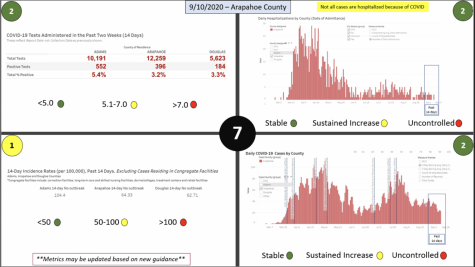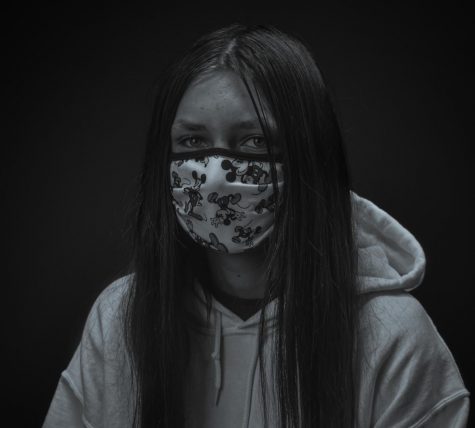The COVID-19 Symptom Tracker: Are You Using It?
This past Monday marked our sixth week of blended learning as a school community. Looking back a few months, none of us had any idea what this school year would look like or if we would even be in school. A large group of us were, and possibly still are, very worried about everything regarding this pandemic. COVID-19 is a frightening concept and it’s even scarier to think we might get it from our fellow classmates and teachers.
Such fear and concern were so palpable back then, the district knew there would need to be a comprehensive and safe plan for our community if we were to go back in August. For exactly this reason, they implemented several policies. Most of us are already familiar with several of these: wear a mask, wash your hands, remain physically distant, among others. And for the most part, we’ve done a good job of following these policies. But most of us have already forgotten about a crucial one: the COVID symptom tracker.

I’m no different. The tracker only came to my attention a few days ago in class. The teacher asked if any of us had been using it daily, and all of the fifteen or so students didn’t even know what they were talking about. The teacher themself admitted they hadn’t been using it as much as was expected. It’s likely most of our readers don’t either.
Aside from the example above, I know several other classmates and peers not using the tracker or even knowing of its existence. It hardly crosses some people’s minds nowadays. This isn’t much of a surprise, since reminders to use it have been few and far apart. The attention has shifted more towards masks, sanitizers, and hallways.
One might think the reason for the symptom tracker being cast to the side might have something to do with low effectiveness or practicality. However that’s not at all the case. Symptom trackers are being used by large companies and organizations, prestigious universities, and even the CDC is using one on their official website. The creators of the first ever coronavirus symptom tracker, both highly-respected scientists, have been applauded for the tracker’s utility.
This tracker, known as the COVID Symptom Study, was implemented first in the UK and then adopted by residents of several countries. According to their website, the Symptom Tracker has found, “2 million people in the UK aged between 20 and 69 may have had COVID-19, and that as of May 2020, 280,000 people in that age range currently have symptoms consistent with COVID-19.” Clearly, these trackers work. Which once again begs the question: why aren’t we enforcing them more?

With over a thousand students quarantined in the district, it’s evident that widespread use of a tracker would help us greatly. The virus is nowhere close to being gone, but some people have started resuming normal life. For some students and their parents, it’s just not possible to quarantine anymore. Using the tracker could help us deal with this new form of life under COVID.
Since we know a symptom tracker works in this situation, the only thing left to figure out is how to get more people to use it. The easiest way to do that is by simply telling students to use it more often. There has been little to no talk of the tracker, so many students just don’t know about it. I know several people who would love to do their part and use this, but they didn’t even know it existed. By posting and talking about it more often, we could greatly increase the number and frequency of students using the tracker before they come to school everyday.
As a community, it is our responsibility to keep our fellow classmates and teachers safe and healthy. We cannot end up with thousands of people forced to stay home or quarantine. If both the school and its students do their part, we can further utilize another tool in the fight against COVID-19: The COVID Symptom Tracker.

Demir Mikulin is a sophomore here at Eaglecrest and this is his first year on staff! He prefers the written content side of advanced media, and loves to...





